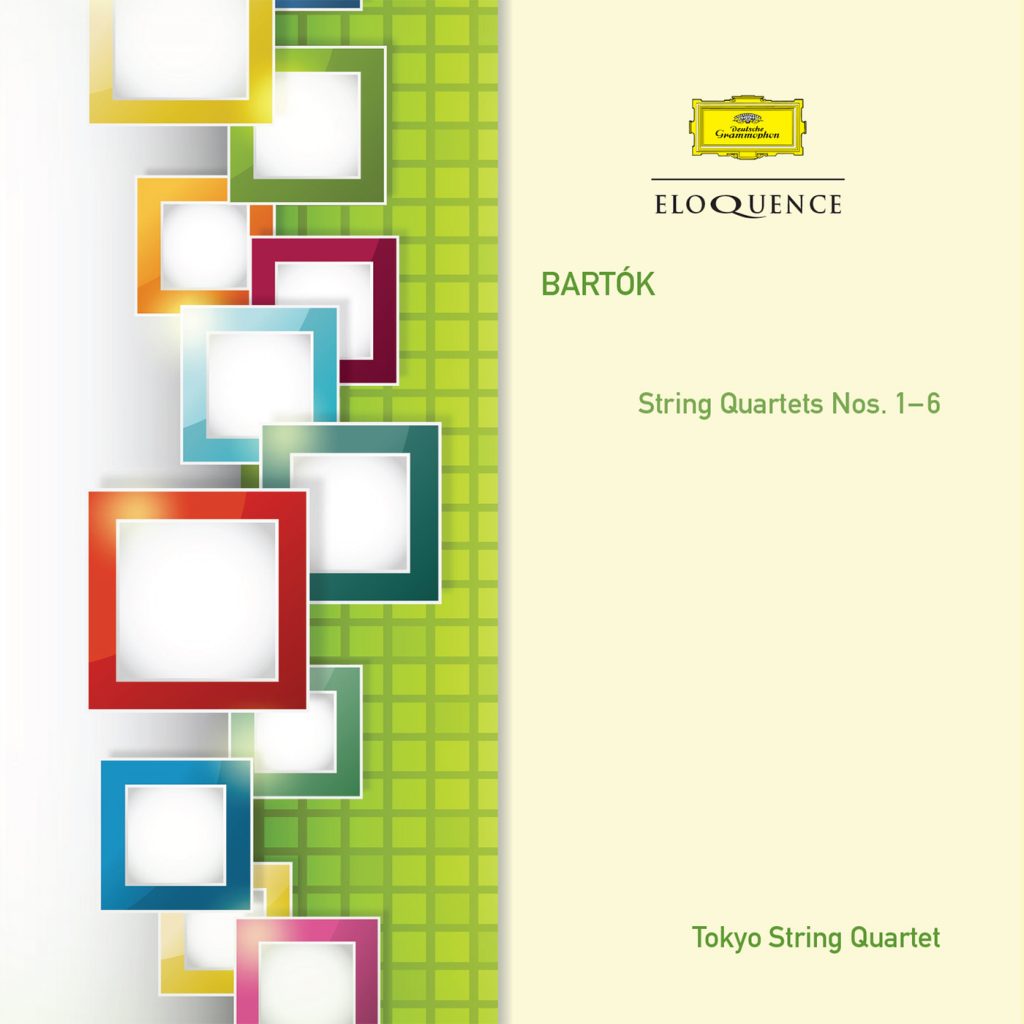Indisputably one of the cornerstones of the string quartet repertoire as well as one of the masterpieces of the 20th century, Bartók’s six string quartets have been labelled ‘the greatest quartets since Beethoven’. Now, for the first time, the six quartets have been compiled onto two (rather than three) CDs with scholarly notes by Arnold Whitall. When issued as a set on LP, it won the Gramophone Award for Best Chamber Music Recording.
BELA BARTÓK
CD 1
String Quartet No. 1, Sz. 40
String Quartet No. 2, Sz. 67
String Quartet No. 4, Sz. 91
CD 2
String Quartet No. 3, Sz. 85
String Quartet No. 5, Sz. 102
String Quartet No. 6, Sz. 114
Tokyo String Quartet
Executive Producers: Cord Garben (Nos. 2 & 6); Cord Garben, Dr. Steven Paul (Nos. 1 & 3); Dr. Steven Paul (Nos. 4 & 5)
Recording Producers: Karl-August Naegler (No. 2); Cord Garben (No. 6); Dr. Steven Paul, Jobst Eberhardt (Nos. 1 & 3); Wolfgang Stengel (Nos. 4 & 5)
Tonmeister (Balance Engineers): Karl-August Naegler (Nos. 2 & 6); Jobst Eberhardt, Edward Graham (Nos. 1 & 3); Klaus Hiemann (Nos. 4 & 5)
Recording Locations: Conway Hall, London, UK, August 1975 (No. 2), December 1976 (No. 6); CBS-Studio, New York, USA, June 1979 (Nos. 1 & 3); St. John’s Church, London, UK, September 1980 (Nos. 4 & 5)
‘The outstanding success of this recording, in a field where there is no shortage of impressive competition, lies in its combination of sustained technical excellence and consistently imaginative interpretation, realised through a notably truthful and sensitive recorded sound. The prime virtue of the set as a whole is its finely-balanced flow of events, with a flexibility that hardly ever seems self-conscious or artificial. In the First Quartet, concentration and spontaneity are in ideal balance, and the performance of No. 2, shunning the easy paths of understatement in the outer movements, has a richly homogenous and live texture. In No. 3, the players make appropriately strong contrasts between the prevailing drama and the occasional lyric episodes; in Nos. 4 and 5 they always offer buoyancy rather than mere strenuousness, and in the first movement of No, 5, in particular, there is an epic quality which shows the music in a new, and newly impressive light. As for the last quartet, the generally intense but never over-driven approach gives weight to the emotional immediacy of the music while vividly catching the varied shades of bitter humour which accompany it. These performances do justice to some of the greatest music of the twentieth century. But the set offers enjoyment as well as instruction, and it is this unmistakable blend of vitality and sensitivity which is, ultimately, its most memorable achievement.’ Gramophone

